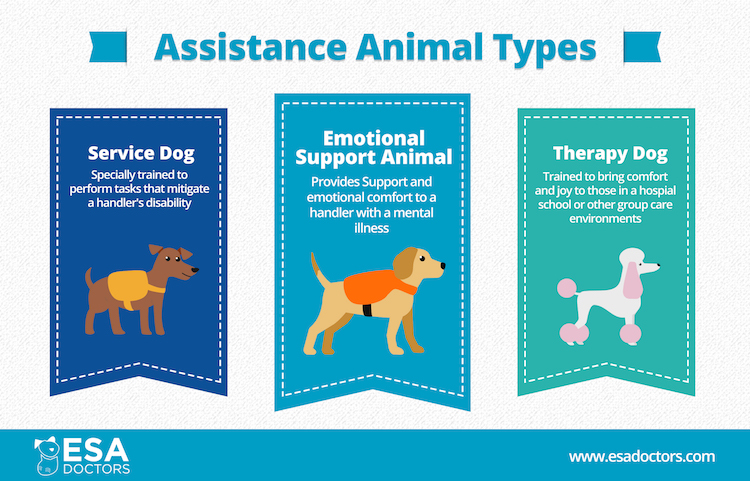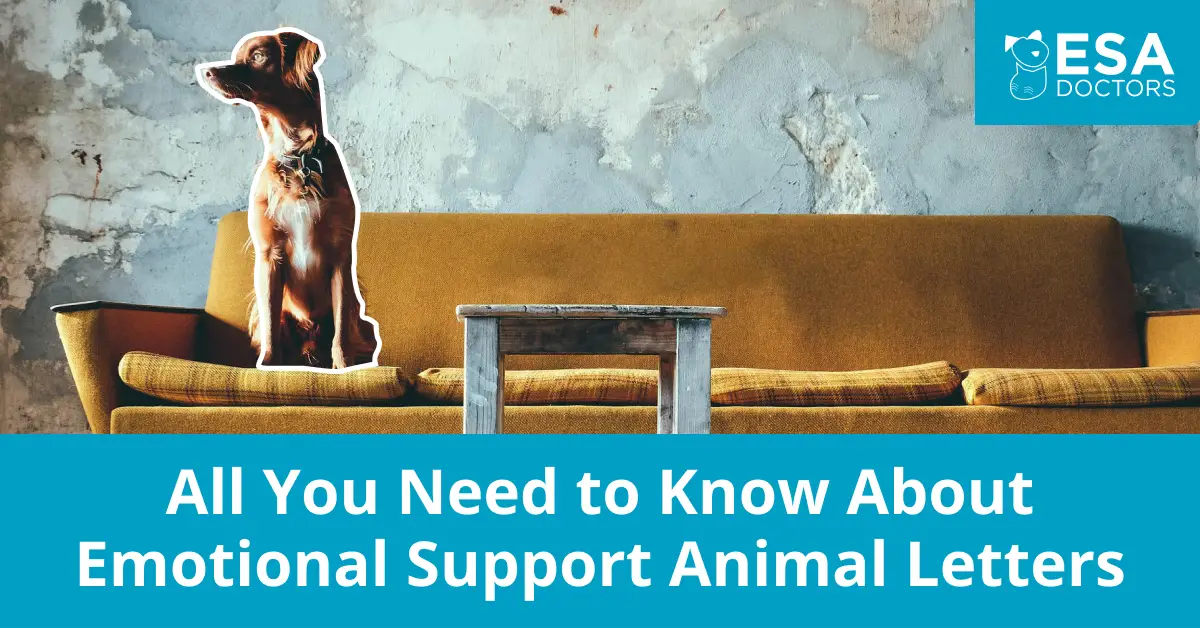Although service animals have a unique bond with their owners, they might not provide the same closeness as an emotional support animal provides. The deep relationship between an animal and a human can’t be forced, after all. Sometimes, a service animal that is focused on performing tasks may not have the close tie that other animals in their handlers’ lives have. In that case, can the handler have both a service animal and an emotional support animal? The short answer is Yes!
If you are ready to connect with a licensed health professional for an ESA or Service Dog letter, click on the link above to get started.
The Human-Animal Bond
A study published in 2021 found that pet parents were less depressed than non-pet parents. The presence of emotional support animals is a formal component of a person’s psychiatric treatment. The bond with the animal is what enables those individuals to adjust emotionally to the world around them.
However, it’s not a random animal that creates that bond; usually, it’s an animal that a person is drawn to or already has an established history with. Besides, an ESA can be any type of animal, such as a cat, fish, rabbit, hamster, or even an iguana.
As an ESA can be any type of animal, chances are the animal a person has the emotional bond with does not qualify to be a service dog.
ESA Doctors, est. 2015
Emotional Support Animal vs Service Animal
Though one is often mistaken for the other, an ESA and a service dog have two very different functions. An emotional support animal provides comfort and emotional support to their disabled handlers, whereas a service dog provides a relevant task or service that assists their handlers. More importantly, the laws that apply to one may not protect the other. It’s essential to know the differences.
What Is an Emotional Support Animal?
An ESA offers comfort and emotional support to people who have an emotional or mental disorder. To qualify as a legitimate emotional support animal, a licensed therapist or physician must write an ESA letter indicating that an animal is a doctor-ordered part of the owner’s mental health plan.
The ESA is a vital part of their owner’s emotional healing. Therefore, it’s essential that an ESA can reside with their owner. The Fair Housing Act ensures that an ESA can live with their owner without paying any pet fees—and even in residences where pets aren’t otherwise allowed.
Emotional support animals do not have public access rights and are restricted in public the same way regular pets are restricted. Service animals have more rights and can go anywhere their handler goes because they are highly trained and must be able to assist their handlers at all times.

What Is a Service Animal?
In most cases, service animals are dogs, while an ESA can be any animal (though some states may have laws dictating what animals can be ESA). Service animals receive extensive training to execute specific daily tasks for a person with a disability. These tasks are often activities their handler can’t do for themselves and are necessary for their handler’s safety and well-being.
Service animals are usually specialized to assist their handlers in one specific area, such as guide dogs, mobility support dogs, psychiatric service dogs (PSD), or seizure-alert dogs. Service dogs receive months—sometimes years—of training. Because service dogs are so vital to their handler’s well-being, they are protected under the Americans with Disabilities Act (ADA). Service dogs may remain with their owners in all public areas and may live and travel with their owners.
Owning Both an ESA and a Service Animal
Not every dog can become a service dog. Because of the comprehensive training and the expectations placed upon them, service dogs function at a very high standard. Most dogs don’t have the temperament or intelligence to perform the job of a service dog.
On the other hand, not every service dog can be an emotional support animal. Though a service dog can also offer companionship and complete particular tasks, the relationship a handler has with their service dog might not be the same as the close bond with another animal. When this happens, the handler can inquire with their therapist or doctor about having both a service dog and an ESA.

Emotional Attachment to a Service Animal
It’s not uncommon, however, for handlers to eventually develop a strong bond with their service dog. In these cases, these individuals are lucky enough to have made a deep connection with their service animal and don’t need an ESA. Since the service dog already exceeds the requirements and applicable laws for an ESA, the dog can take on a double role. However, they must remain a service dog first and an emotional support animal second.
For handlers who need the assistance of a service dog yet find another animal to have a healing, emotional connection that addresses their mental disorders, then having both a service dog and an emotional support animal may be the way to go.








Leave a Comment